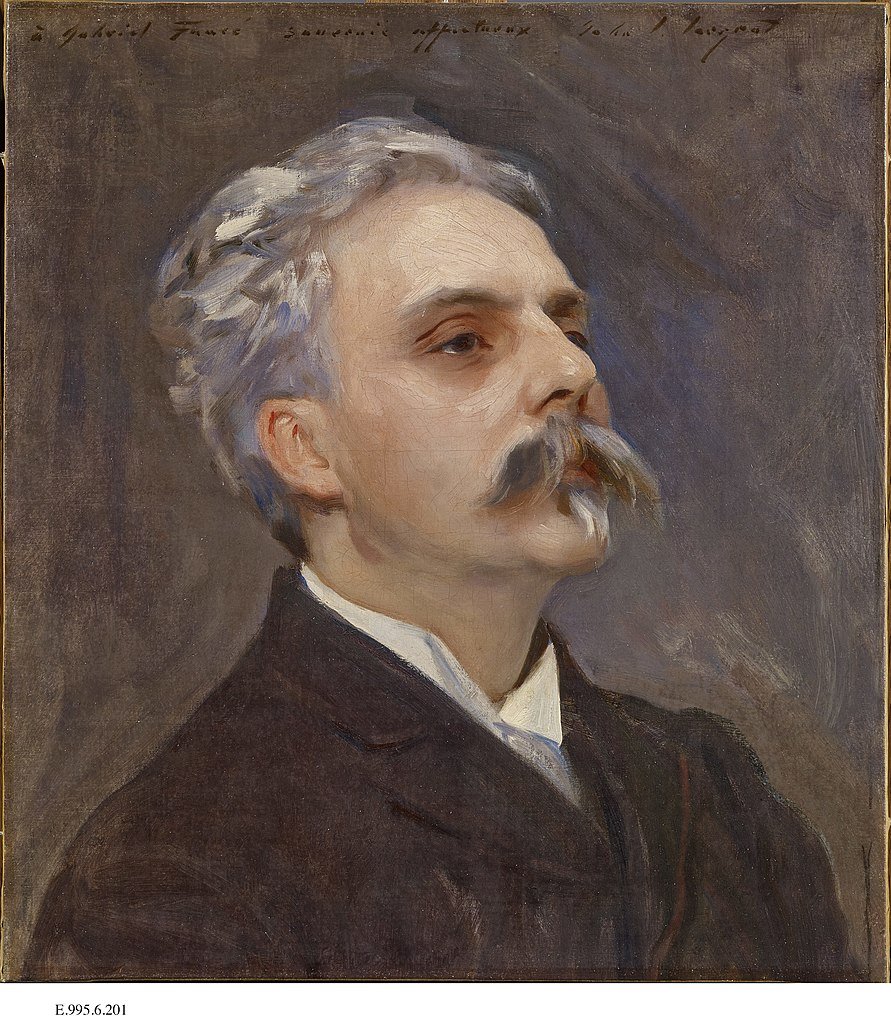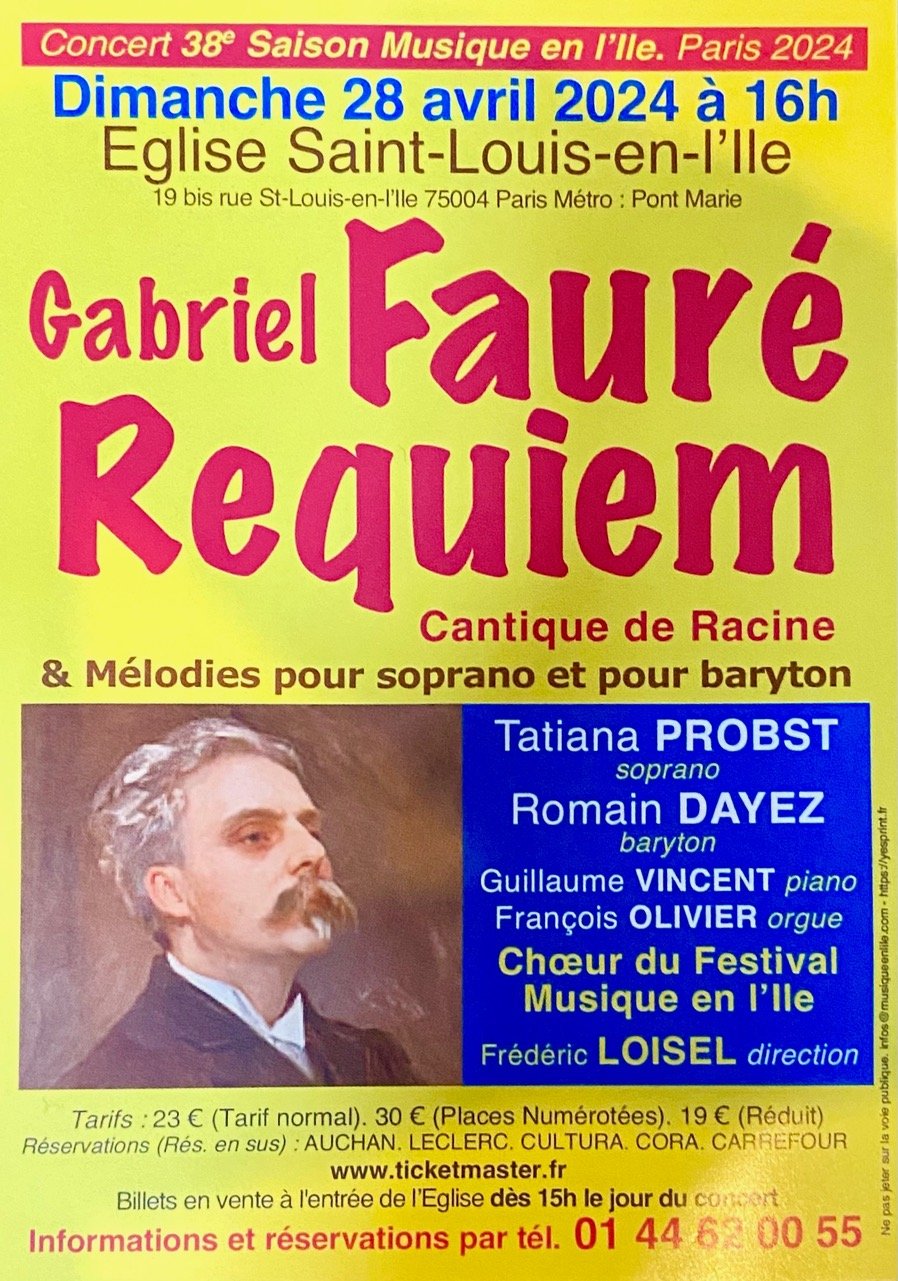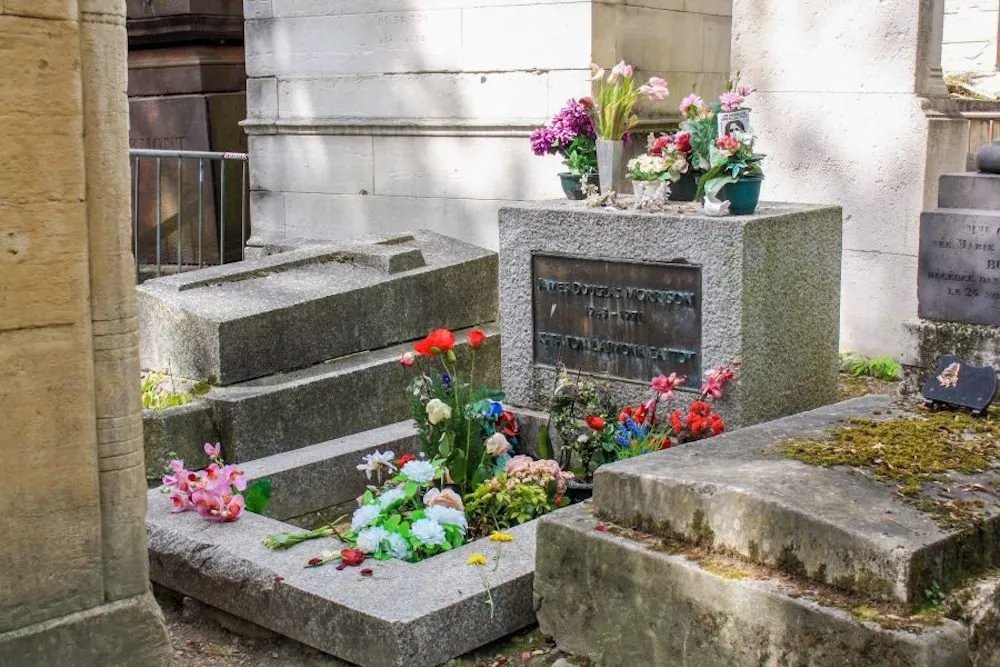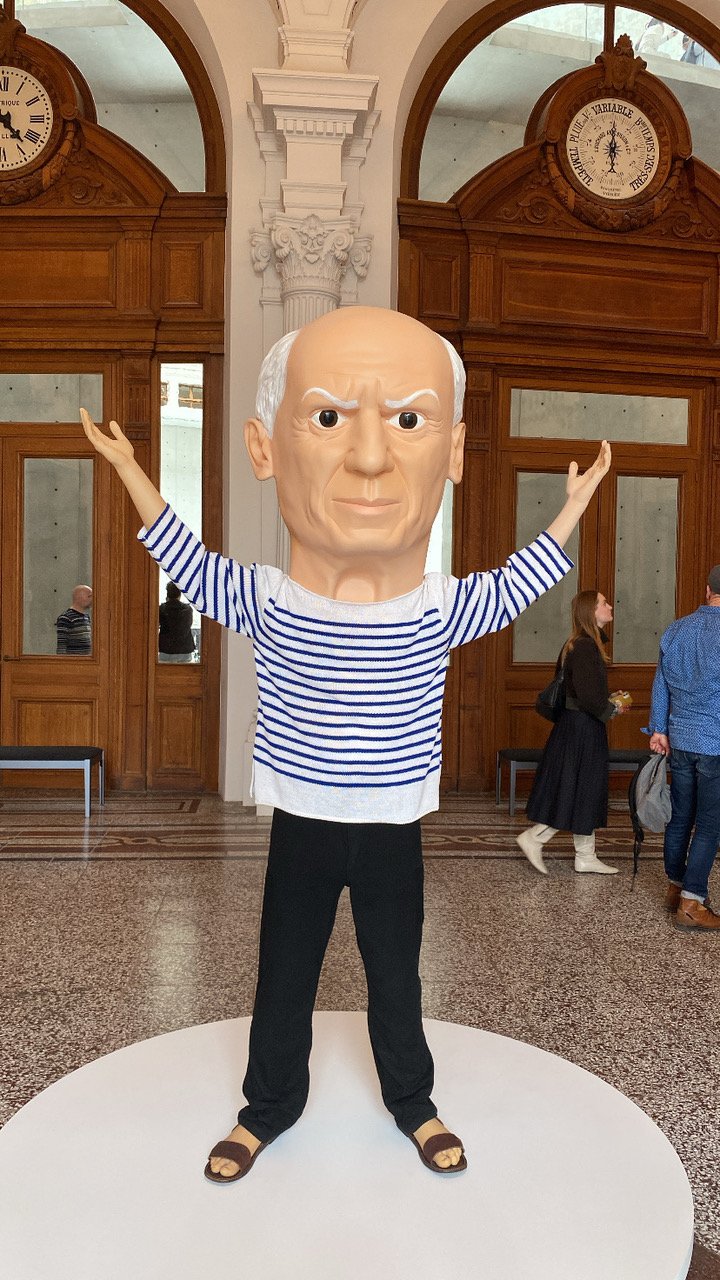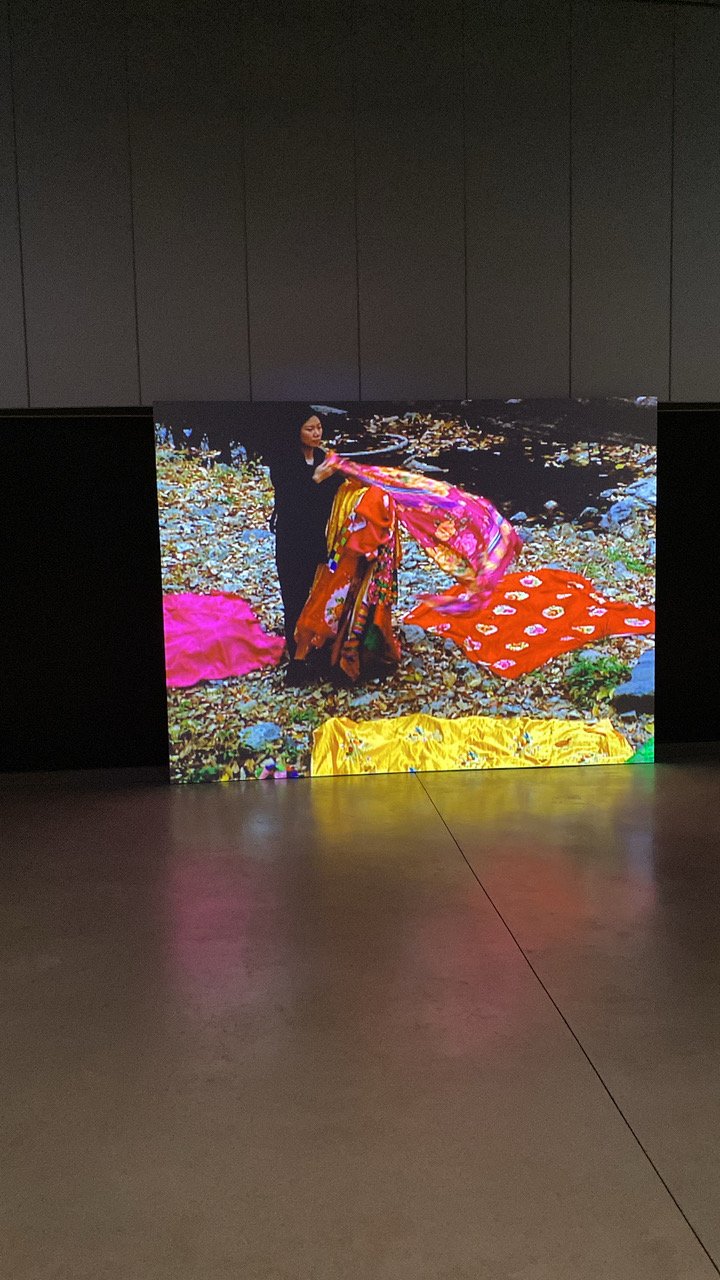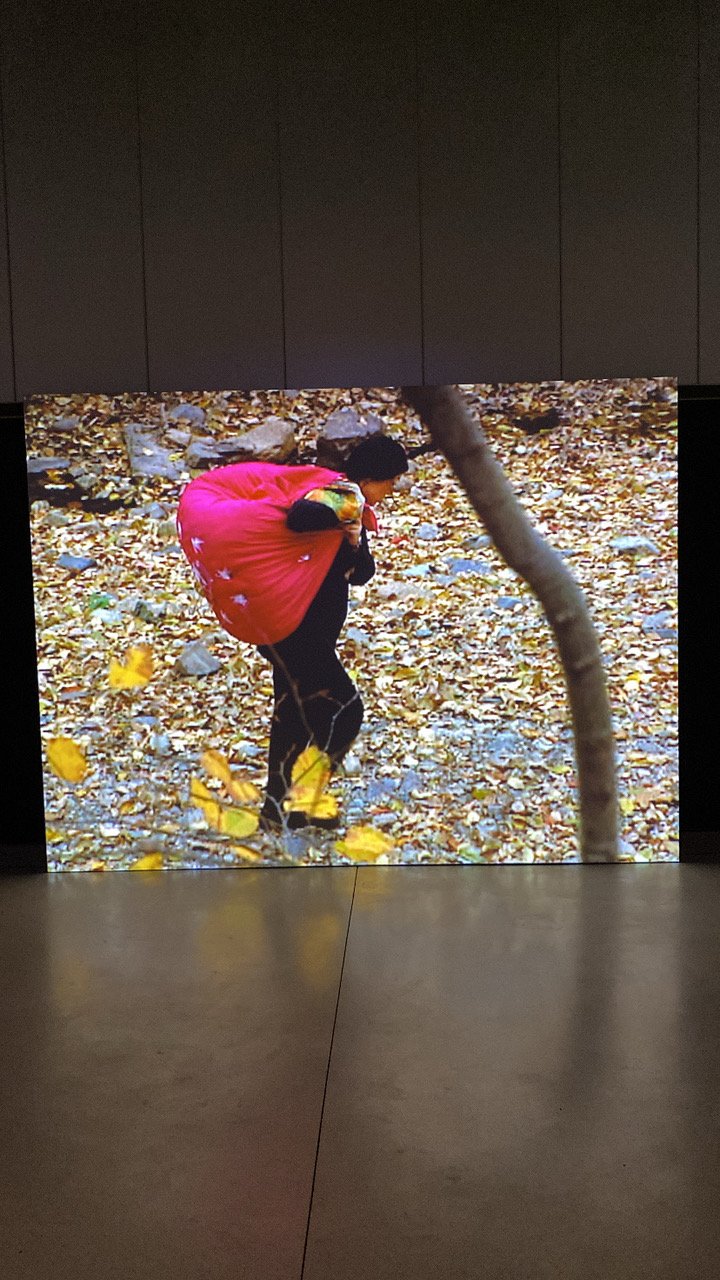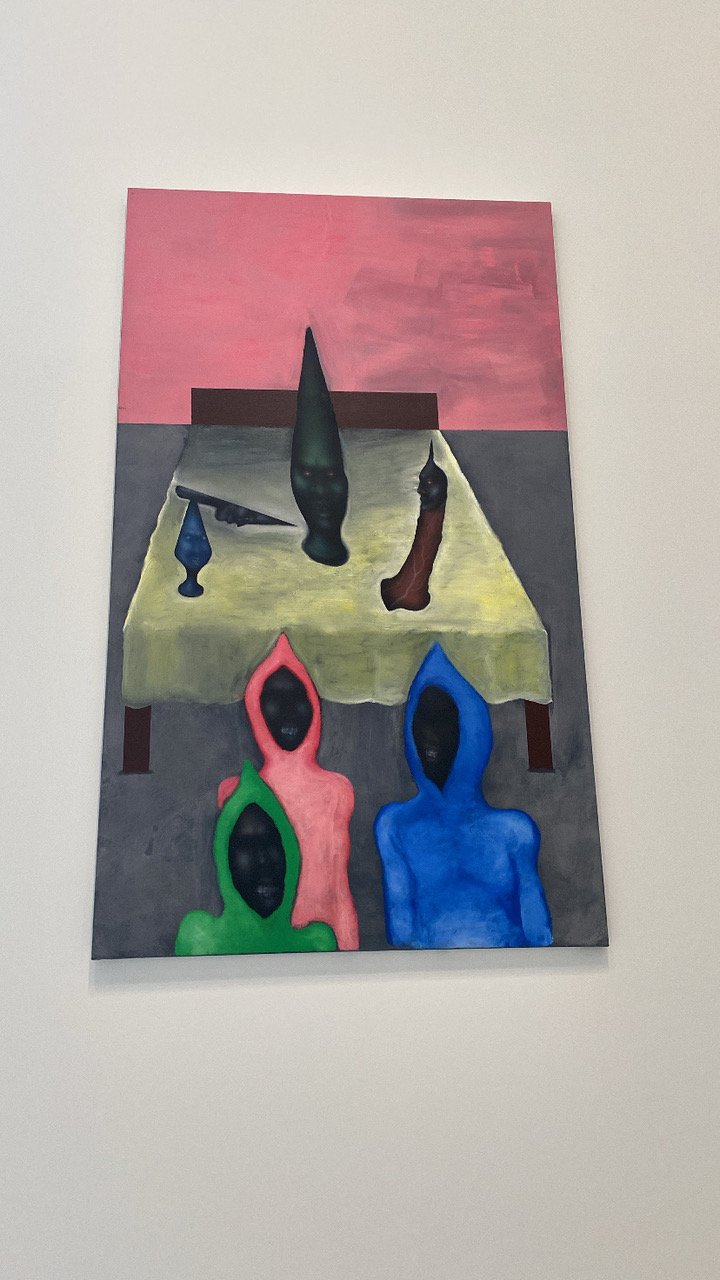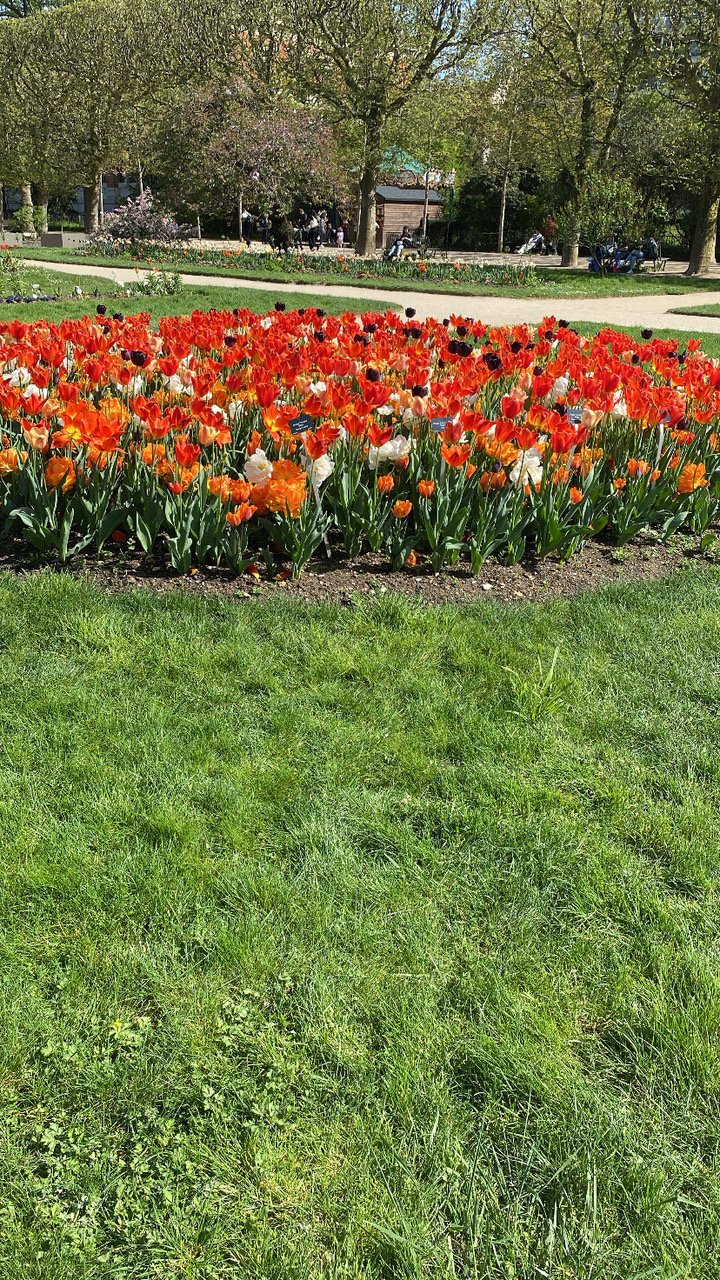A week in the life …..
Newsletter 05.05.2024
Bienvenue and welcome back to Musée Musings, your idiosyncratic guide to Paris and art. And meals and music and lectures and leisurely strolls.
This past Sunday, I walked to the Ile Saint Louis, (as I have done three of the past four Sundays in April) to hear a concert at the Eglise Saint Louis en l’Ile. It was my usual route, along the Place des Vosges, past the boutique that once sold Magnums (ice cream not guns) but which is now a boutique selling Ricola (how does that even make sense), past the merry-go-round on rue Saint Antoine and then MEP where Annie Ernaux and Lisa Fonssagrives Penn are still on display. Over one bridge and then a second. And finally, to the church, a few steps beyond Bertillon where the line to get ice cream cones gets longer just as the days do.
This week’s program was all Gabriel Fauré, whose (uncredited) portrait by John Singer Sargent graced the modest program. (Figs 1, 2) The concert began with Fauré’s ‘7 Melodies for soprano, baritone and piano,’ with text (poems) by Victor Hugo and Paul Verlaine. As the soprano’s mellifluous voice filled the church and the baritone’s deep tones reverberated, I thought how lucky I was to be here, to be able to hear music of this calibre so easily and so often.
Figure 1. Portrait of Gabriel Fauré, John Singer Sargent
Figure 2. April 28 Program for Eglise Saint-Louis-en-l’Ile
I was especially interested in the Verlaine poems because my daughter is obsessed with Verlaine’s lover, Arthur Rimbaud. Because the writer, Jack Kerouac (On the Road) was and because her other obsession - the poet, lyricist, and lead singer of The Doors, Jim Morrison was, too. (Fig 3) One of Verlaine’s poems, called ‘Spleen,’ evokes, according to one reviewer, “the falling of rain on the miserable lodgings that Verlaine shared with Rimbaud in … London, in 1872.”
The poem is filled with words of sadness, despair and grief. The last verse reads: “C'est bien la pire peine, De ne savoir pourquoi, Sans amour et sans haine, Mon coeur a tant de peine." (It is indeed the worst pain, Not knowing why, Without love and without hatred, My heart has so much pain)
Figure 3. Tomb of Jim Morrison, Père Lachaise Cemetery, Paris
As I listened, I thought about the poem’s title and I was transported to another April afternoon. Ginevra and I were sitting on the grass in Dolores Park in San Francisco sharing a dreamy coconut cream tart from nearby Tartine. And we were taking turns reading Baudelaire’s ‘The Spleen of Paris’ to each other in French and in translation. The book’s title doesn’t refer to the body part, but like Verlaine’s poem, to "melancholy with no apparent cause, characterized by a disgust with everything.”
We were reading Baudelaire’s poems because we were taking an online course through Coursera, taught (and still taught) by the then (and still) president of Wesleyan University. The course, called ‘The Modern and the Postmodern,’ brings together all of the random knowledge you have about dozens of 19th and 20th century artists and philosophers and writers and puts them into a coherent whole. Highly recommended.
The final piece was the Requiem. (Fig 4) Sung by the chorus, accompanied by the Church’s newly restored organ. I enjoyed Mozart’s Requiem on Easter Sunday but I prefer Fauré’s. The music is beautiful, the words are comforting. It has been described as a 'lullaby of death'. In the final section, “In Paradisum” life's trials are over. The choir and baritone, like angels in heaven, softly welcome the deceased to Paradise.
Figure 4. Baritone & Chorus, Fauré Requiem
On Monday, I was set to do some writing but I got cabin fever. So I pressed ‘Save’ and closed my computer. A 30 minute stroll along a narrow street that changes names four times followed by a few twists and turns and I was at the Bourse de Commerce for the new exhibition, La Monde come Il Va (The World as it Goes). (Fig 5)
Figure 5. Picasso in sailor shirt and sandals greeting visitors at Bourse de Commerce, Paris
Before setting off, I promised myself that I was not going to try to see the entire exhibition. Once I arrived, I decided to concentrate on the work of the Korean artist Kimsooja and a group of works loosely assembled around a single theme, the title taken from Balzac, “The human comedy.”
Kimsooja is the principle artist at the Bourse for this exhibition. The pieces of hers that I wanted to know more about were her ‘Bottari,’ (Fig 6) (bundles in Korean) traditional wrapping cloths. They can be plain or embroidered or painted. They can be small scraps of cloth sewn together and stitched onto a simple cloth, like a patchwork quilt.
Figure 6. Bottari, Kimsooja, Bourse de Commerce
They have many uses, some of them mundane, others significant - from covering food to gathering a person’s most important possessions at moments of significant transitions. In the exhibition, there is a vivid red Bottari that holds the used bedclothes of a newlywed couple, its brightness is a symbol of hope and good wishes for their future. (Fig 7)
Figure 7. Bottari for newlyweds, Kimsooja, Bourse de Commerce
Reading further (Sun Jung Kim (Documenta 4, 2001) I learned that Korean women are taught needlework skills from an early age and that just as blankets and bedclothes are part of everyday life, so too, for women, is making wrapping cloths. “(H)umans ….are born on a blanket and die in one….The blanket is a site for human life and a place of its joy, anger, grief and pleasure. In Korea, traditional folk belief suggests that good luck and happiness can be preserved inside the cloth.” The ornamental patterns on the blanket are aspirational, conveying hope for fertility, health, long life.
There is a video of Kimsooja gathering brightly colored cloths in a landscape, making a bundle of all the cloths, putting the bundle on her back and then walking away. (Figs 8, 9) Bottaris I also learned, “hold a special place for 'conveying buried memories and pain, as well as life's quiet passions’." I thought about my husband’s clothes, clothes that we don’t want to give away, clothes that we don’t want to throw away. When I am back in San Francisco, I will gather them and make a bottari.
Figure 8. Video of Kimsooja gathering cloths for bottari
Figure 9. Video of Kimsooja walking with wrapped bottari over her back
The Human Comedy exhibition includes works by Cindy Sherman and Pol Taburet, (Figs 10, 11) whose work I saw a few years ago at Lafayette Anticipations. The most startling of all the works are those by Sun Yuan and Peng Yu. Life size old men, former political or religious leaders, some from long ago, others more recent, with recognizable faces and clothing, sit in automated wheelchairs wandering around at random. (Figs 12-14) Was one of the sleeping guys Donald Trump in court this week?
Figure 10. Cindy Sherman, Human Comedy
Figure 11. Pol Taburet, Human Comedy
Figure 12. Sleeping man on wheelchair, Sun Yuan & Peng Yu
Figure 13. Sleeping man on wheelchair, Sun Yuan & Peng Yu
Figure 14. Sleeping Trump, on trial in New York City, week of April 29, 2024
On Tuesday, I once again headed over to the Mairie for a lecture about food. Last week’s lecture had been on ‘Auguste Escoffier et l'avènement de la cuisine de la palace,’ (the beginning of palace cuisine). (Fig 15) Here are a few things I learned. Escoffier, like Careme before him, thought of himself as an artist, an architect, an equal to the people he served. When Escoffier joined forces with Cesar Ritz, hotel restaurants became a thing. Palace cuisine doesn’t refer to cuisine for royalty but cuisine for wealthy people staying at grand hotels. The first of which might have been the Palace Hotel in San Francisco. Escoffier had been in the military, he rationalized the workings of the kitchen and its staff, focusing upon discipline - no drinking, no smoking.
Figure 15. Cesar Ritz (left) & Auguste Escoffier (right)
The grand hotel restaurants had large dining rooms as well as smaller dining spaces for between 2 to 35 people. For the more intimate rooms, there was a backdoor so that any gentleman who was dining with a woman not his wife could leave the restaurant discretely. And finally this, restaurants began offering prix fixe for luxury menus for specific clients. The idea was to cater to the wealthiest clients’ preferences. Restauranteurs knew their clients’ tastes. Just like tailors knew their measurements. Bespoke menus.
This week’s lecture was about food and stained glass - not as odd a pairing as you might imagine. In the middle ages, stained glass windows in grand churches all had representations of the Twelve Months of the Zodiac. In different panels, the peasants are shown working and the nobility are all shown eating or relaxing. (Figs 16, 17) There were a couple Biblical meals, too. The most popular was the banquet at which Salome was either shown dancing or receiving the head of John the Baptist on a plate. (Fig 18) The lecture ended with French restaurants whose stained glass windows pour light into the dining spaces. Like one of my favorite restaurants, Bofinger. (Fig 19)
Figure 16. The Vendange,Stained Glass window, Chartres Cathedral
Figure 17. The Boulangerie, Stained Glass window, Chartres Cathedral
Figure 18. Salome Dancing above, St. John holding his head below, Stained Glass window, Chartres Cathedral
Figure 19. Stained Glass Window, Bofinger Brasserie, Paris
I slipped out of the lecture a little early, I was hungry. Last week, it was all about gefilte fish. This week it was all about hot dogs. I knew exactly where to go, Clarks, the little hotdog stand down the street from Ottolenghi’s Tavline. I had my hotdog exactly the way I like them, Heinz ketchup, yellow mustard, grilled onions and relish. I guess you can take the girl out of Pittsburgh, but you can’t take Pittsburgh out of the girl… (Figs 20 - 21)
Figure 20. Waiting for my hotdog at Clark Hot Dog
Figure 21. My hot dog from Clark
Wednesday is the last day I will tell you about. May 1st, a day on which two things happen. Two things which have nothing to do with each other and which are, in fact, antithetical. The first is May Day, La Fête du Muguet (Lilly of the Valley). After a leisurely brunch (everything was closed so I wasn’t in a hurry to go anywhere) of lightly toasted baguette from Brigat, slathered with demi-sel butter and Dirty Girl strawberry jam from San Francisco, I set off to find a sprig of muguet. (Fig 22) Which are sold on nearly every street corner by people who don’t usually sell things - like members of the Coeur Rouge (Red Cross). The custom of offering muguet bouquets on May 1st goes back to medieval times, but it wasn't until 1561 that it became official. That year, King Charles IX received a sprig of muguet and was so pleased, that he began offering sprigs of muguets to all the ladies in his court on May 1.
Figure 22. Me and my muguet
With my muguet in hand, I wandered along the Seine and into the Jardin des Plantes. (Figs 23-25) The day was warm, the breeze was cool. I thought about sitting on a bench under a tree but I hesitated because of the corbeaux (ravens). They reminded me of the huge magpies I unhappily encountered in Australia. There was ample evidence that these particular ravens had pooped on those benches before, there was no telling when they would poop on them again. I kept walking!
Figure 23. Boats docked along the Seine
Figure 24. Path along the Seine on my way to the Jardin des Plantes
Figure 25. Jardin des Plantes, Paris
After the garden, I walked along Boulevard Beaumarchais, back to my place. Just as police in riot gear began to jog down Boulevard Beaumarchais in double rows, in the opposite direction. (Figs 26, 27) And that’s because May 1 is also Labor Day. And that means the Labor Day parade. In a flash, seriously in a flash, the street was flooded with casseurs running toward the Bastille. Casseurs, (breakers) are young men (I’m assuming) dressed in black, mostly wearing gas masks and helmets. The police were mostly successful in corralling them into the center of the street so that they broke only a few store windows and threw only a few huge garbage cans, filled with garbage and fireworks, into the street.
Figure 26. The Bastille with May 1, Labor Day posters in place, awaiting the parade
Figure 27. The police, getting ready for the assault of the casseurs who proceed nearly every parade
With that sea of energized humanity rushing toward me, I felt like I was going the wrong way on an escalator. I felt like I was being caught up in a stampede. The problem wasn’t really the casseurs or the police. The problem was the people trying to get out of their way. Someone managed to open a building door and about 12 of us rushed into the lobby and sheltered in place until the casseurs and the police were gone. Peaceful parade participants rejoined the parade.
I kept walking in the opposite direction, toward Utopie, the boulangerie which a few days ago won the 2024 award for the best traditional baguette in Paris. I wondered if Utopie might still be open. It was and not only that, there were fresh baguettes tradition, still warm from the oven. My day ended the way it began, with delicious carbs! (Fig 28)
Gros bisous, Dr. B.
Figure 28. May Day ends as it should, with a warm baguette from Utopie Boulangerie
Thanks for your kind and thoughtful comments. I am, as always, so very very grateful to receive them.

